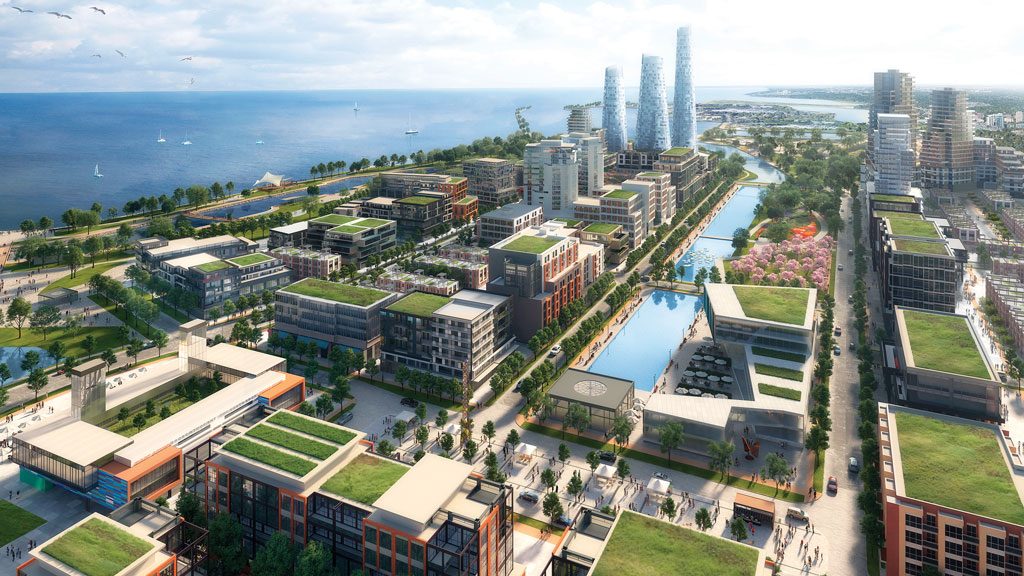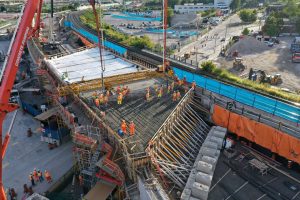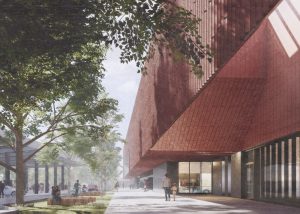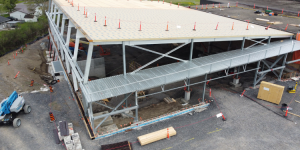The vision, the plan and the team are now all in place as stakeholders in Mississauga, Ont. prepare to move forward on Lakeview Village, a major new 250-acre mixed-use project that includes housing for 20,000 new residents on the site of the former Lakeview Generating Station on Lake Ontario.
A multi-year planning process led to the creation of the Inspiration Lakeview master plan, with a land-use template for the area written into the City of Mississauga’s Official Plan last year.
The recent sale of the vacant Ontario Power Generation lands to the Lakeview Community Partners development consortium for $275 million paved the way for the official unveiling of the community plan at a special event April 10.

Mississauga Mayor Bonnie Crombie and local MPP Charles Sousa, the provincial finance minister, were joined by principals from the five member firms of the consortium — TACC Construction Limited, Greenpark Group, CCI Development Group, Branthaven Homes and Argo Development Corporation — at the presentation.
“These lands present a once-in-a-lifetime opportunity to unlock the potential of a huge piece of land,” Sousa said.
Crombie followed: “Where else is there 250 acres available for waterfront development? Nowhere.
“It’s a parcel of land with limitless possibilities.”
The master plan goes to council in June.
Argo president of land development Fabio Mazzocco, who’s also the president of Lakeview Community Partners, laid out a possible development timetable that calls for another two years of planning while remediation and environmental work is undertaken on the waterfront lands in anticipation of the transfer of 67 acres to the City of Mississauga for green spaces and other uses.
He also highlighted the launch of infrastructure construction in 2020 and the start of home building soon after that with 2023 as the possible date for the first residential occupancy.
The plan anticipates 5,000 to 7,000 residential units in a variety of housing forms including townhouses, mid-rise and highrise.
Other project details include more than 600,000 square feet of employment and institutional uses, over 200,000 square feet of retail and cultural space, the creation of the Serson Innovation Campus with incubator office space ideally linked to a post-secondary institution, the broad use of innovative energy sources that could be arranged in a district energy plan, a transit plan that could include a higher order of transit linked to the nearby Port Credit GO station and the city’s MiWay, and the creation of Serson Square, envisioned as a central gathering place, and Waterfront Common, a public park with four-season programming.
“The key to the project is bringing the innovation corridor to life and also the Serson campus,” said Mazzocco.
“That is going to need some visioning from a post-secondary point of view. We’ve kind of got the building blocks in place and I am pretty confident together we will be able to attract a post-secondary institution, or more than one.”

Further work remains in finalizing an energy plan, commented David Scott, president of The Municipal Infrastructure Group Ltd., which has worked on engineering services.
“We are very much in the early stages of evaluating options,” he said. “From an energy standpoint we are all about trying to reduce the carbon footprint, and what has been used to date (coal) was not such a clean energy source. We are looking at solar, we are looking at geothermal, biowaste, a number of different sources of energy.”
The village’s location adjacent to the new G.E. Booth Wastewater Treatment Facility should be seen as an asset, a resource to be tapped, said Scott.
Net zero energy for the whole community, he said, is “something we’d like to strive for, we are going to see how the economics work out.”
Mazzocco said on energy, “Where there’s a will there’s a way, so I think as time goes on we will get closer to finding the right measures of sustainability.”
Owner of TACC Construction Silvio De Gasperis said the remediation component of the project posed further challenges in the period leading up to the start of construction.
“This project here has its challenges with the waterfront and the cleanup,” he said.
“There are still a lot of remnants from the original power plant, a lot of concrete that has to be demolished. We put it into our budget but we don’t know the final outcome of those challenges. We want to make sure we keep it within the budget.”
Golder Associates and Urban Strategies are among consultants who have worked on the plan so far.











Recent Comments